Celebrate World Migratory Bird Day (WMBD) with us in 2022! This year’s theme is “Dim The Lights for Birds at Night”. Have fun learning about a new migratory bird every day. We have colouring pages, puzzles, activities, and more. Download for free and enjoy nature with your family at home.
Migratory Bird of the Day: Willet
Willets are large shorebirds with long gray legs and a dark straight, slightly heavy bill, which is sometimes pale at the base. Overall, Willets can look quite nondescript and dull-colored in their winter plumage, with plain gray-brown plumage above and pale feathers below. However, when they take flight look out for the bold white-and-black striped pattern on their wings. This is a give away that you’ve seen a Willet, as none of the other similar-sized shorebirds have this wing-pattern. You can also listen out for their “kip-kip-kip” call which they might make if alarmed or agitated.
Most of the Willets that we see in the Caribbean are long-distance migrants, coming south from their in-land breeding and coastal breeding areas in North America. During fall and winter they can be found on our beaches, mudflats, and other coastal wetland areas. Here they feed on small crabs, worms, clams, and other invertebrates. Willets are often found feeding together in small flocks.
A very small number of Willets actually breed in some parts of the Caribbean including on Puerto Rico, Cuba and Anguilla. During the breeding season they are still overwhelmingly gray-brown in appearance, however their feathers become more streaked, mottled and slightly darker.
As with so many shorebirds, Willets are likely to be negatively affected by habitat loss and degradation across their breeding, migration, and wintering ranges. These changes are occurring through increased agriculture, commercial fishing, shrimp aquaculture, and tourism development. Willets are also hunted in parts of their range. Although currently listed as “Least Concern” by the IUCN it is important that wetland habitats are conserved for Willets and all of our shorebirds. Learn more about this species, including its range, photos, and calls here.
Colour in the Willet
Download the Migratory Birds of the Day Colouring Page! Use the picture above and the photos on this page as your guide, or you can look up pictures of the bird online or in a bird field guide if you have one. Share your coloured-in page with us by posting it online and tagging us @BirdsCaribbean #WMBD2022Carib
Listen to the calls of the Willet
During migration and in winter you might hear Willets make a “kyah-yah” often in flight or as they take flight.
Photos of the Day
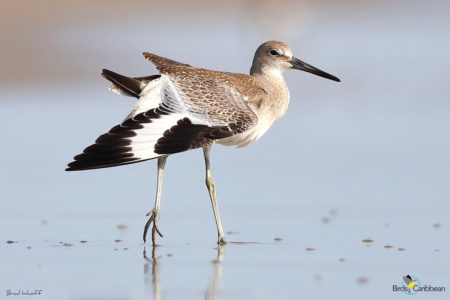
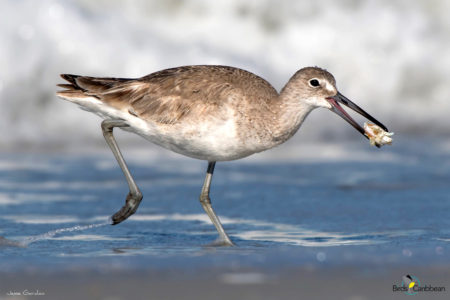
Activity of the Day
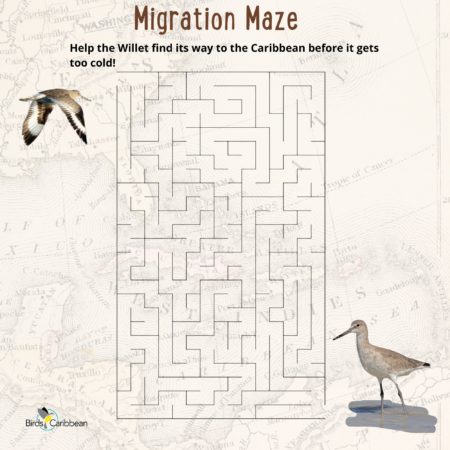 FOR KIDS: Shorebirds, like Willets, make long migratory journeys in the Fall and Spring between their breeding areas and the places where they will spend the winter. Often their migrations can cover 1000s of kilometres and might involved several re-fuelling stop-offs on the way! Shorebirds ‘wintering grounds’ are often far to the south of where the birds breed. This is so that Shorebirds can survive through the winter in warmer climates, away from the freezing conditions further north. Warmer weather on the wintering grounds also means that food is more abundant and easier to find for these hungry shorebirds. Can you help this Willet find its way on its long migratory journey? Can you help this Willet find its way on its long migratory journey? Find the route through the maze to guide it to warm weather and plenty of food on its wintering grounds. You can find the solution here.
FOR KIDS: Shorebirds, like Willets, make long migratory journeys in the Fall and Spring between their breeding areas and the places where they will spend the winter. Often their migrations can cover 1000s of kilometres and might involved several re-fuelling stop-offs on the way! Shorebirds ‘wintering grounds’ are often far to the south of where the birds breed. This is so that Shorebirds can survive through the winter in warmer climates, away from the freezing conditions further north. Warmer weather on the wintering grounds also means that food is more abundant and easier to find for these hungry shorebirds. Can you help this Willet find its way on its long migratory journey? Can you help this Willet find its way on its long migratory journey? Find the route through the maze to guide it to warm weather and plenty of food on its wintering grounds. You can find the solution here.
FOR KIDS AND ADULTS: Need some help with your Shorebird ID? We know that these long-legged, long billed, gray-brown birds can be confusing sometimes! If you struggle to pick out Willets from the somewhat similar Short-billed Dowitcher take a read of this blog post by Allison Caton who has some handy tips for you.
Finally enjoy this video of Willets, moulting into winter plumage, feeding on the beach! Notice how they probe the sand with their long bills, in search of tasty bivalves and crabs.

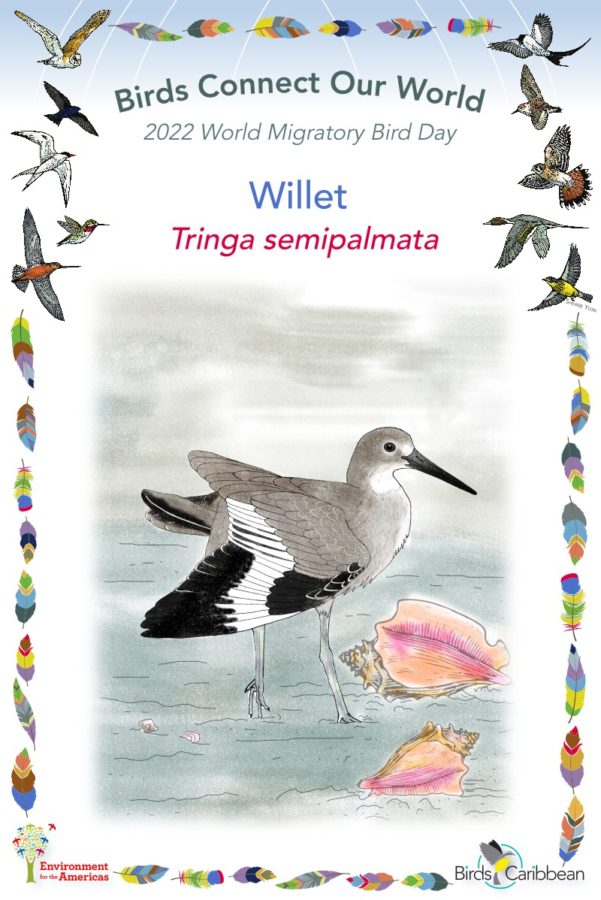
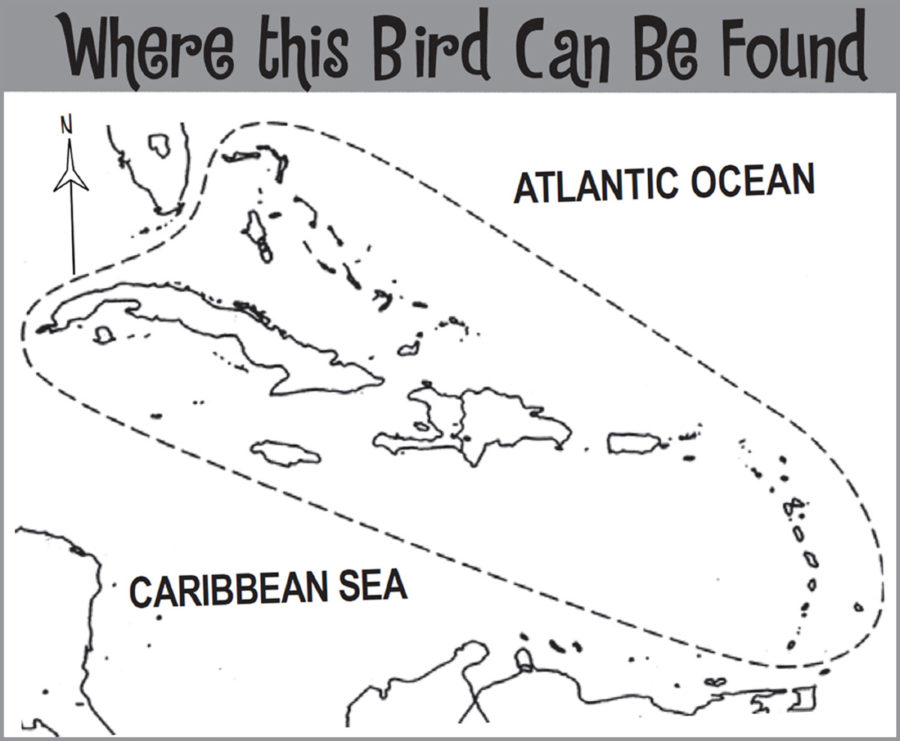
One comment
Comments are closed.